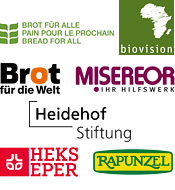News
02.06.2014
The world is getting fatter: 2.1 billion people overweight or obese

30% of the world’s population are either obese or overweight, according to a new study published last week by British medical journal The Lancet. The number of overweight and obese people increased from 857 million in 1980 to 2.1 billion in 2013. The researchers used data covering 188 nations from 1980 to 2013. Worldwide, the prevalence of overweight and obesity rose by 27,5% for adults and 47,1% for children over the past 33 years. The proportion of adults who were overweight - defined as a body-mass index (BMI) of 25 or more - increased from 28,8% to 36,9% in men, and from 29,8% to 38,0% in women. Because of the increases in prevalence, the study warned that obesity has become a major global health challenge. Not a single country has reported a decline in the last three decades, the researchers said. Increases were recorded in both developing and developed countries. More than half of the 671 million obese people live in 10 countries, topped by the United States and followed by China, India, Russia, Brazil, Mexico, Egypt, Germany, Pakistan and Indonesia. The prevalence of obesity exceeded 50% in men in Tonga and in women in Kuwait, Kiribati, Micronesia, Libya, Qatar, Tonga, and Samoa. In North America, the USA stood out with roughly a third of men and women being obese. To tackle the problem, urgent global action is needed to help countries to more effectively intervene against major determinants such as excessive caloric intake, physical inactivity, and active promotion of food consumption by industry, the study concluded.
30.05.2014
Small farmers squeezed onto less than 25% of the world's farmland, study finds
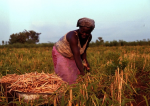
Governments and international organisations frequently stress that small farmers control the largest share of the world’s agricultural land. But a new review of data carried out by GRAIN, an international non-profit organisation, reveals that small-scale farmers are now squeezed onto a quarter of the world’s farmland - or just 17%, if farms in India and China are excluded. With the launch of 2014 as the International Year of Family Farming, the UN Food and Agriculture Organisation (FAO) acknowledged the importance of small farms and announced that family farms work 70% of the farmland. According to GRAIN, however, this contradicts the experience with small farms around the world since corporate farms, big biofuel operations and land speculators are pushing millions off their land. “We are fast losing farms and farmers through the concentration of land into the hands of the rich and powerful,” said Henk Hobbelink, coordinator of GRAIN. “The overwhelming majority of farming families today have less than two hectares to cultivate and that share is shrinking. If we do nothing to reverse this trend, the world will lose its capacity to feed itself.” The report used official statistics from national agricultural census bureaus wherever possible, complemented by FAO's statistical database and other sources. To define what a “small farm” is, they mostly used the definition by each national authority, since the size of small farms in different countries varies widely. The report confirmed that over 90% of all farms in the world today are small, holding on average 2.2 hectares, and that they are still getting smaller. Despite this, they produce most of the world’s food and are often much more productive than large corporate farms. If all farms in Kenya matched the output of its small farms, the nation’s agricultural productivity would double and in Central America, it would nearly triple, the report found. Women are the major food producers, but their role remains unrecorded and marginalised. GRAIN’s conclusion is that “We need to urgently put land back in the hands of small farmers and make the struggle for agrarian reform central to the fight for better food systems.”
27.05.2014
G8 New Alliance for Food Security and Nutrition raises human rights concerns

FIAN International has raised grave concerns about the G8 New Alliance for Food Security and Nutrition. In a policy paper published ahead of the G7 summit in Brussels on 4-5 June, the organisation analysed the initiative from a human rights perspective. The paper concludes that the New Alliance ignores general human rights principles and contradicts a human rights-based framework in key issues relevant for those most affected by hunger and malnutrition: small-scale food producers. FIAN says the G8 initiative is bluntly equating the opening of agriculture and food markets to foreign investors with combating hunger and malnutrition. Food security and nutrition is dangerously narrowed down to the general availability of food through increased productivity. The paper directly contrasts policy actions of the G8 initiative in four key areas - seeds, land, social protection/income, and nutrition - with a human rights framework. For example, while the UN-Special Rapporteur on the Right to Food asks governments to implement farmers' rights (as defined in the International Treaty on Plant Genetic Resources), the G8-led initiative pushes for the “implementation of national seed regulation” for greater private sector involvement. FIAN also criticised the G8's narrow understanding of the nutritional dimension of food production which ignores that food and nutrition security does not simply entail increased caloric intake, but rather a consistent access to diverse, nutritious and culturally-adequate food. “The New Alliance’s investments in agricultural food production tend to focus on mainstream crops with relatively low nutritious and high caloric content, such as maize, sugar, and rice, which results in dietary gaps”, the paper argues.
21.05.2014
UN focuses on obesity and unhealthy diets

UN experts have highlighted the need to address obesity and unhealthy diets. “Parts of the world are quite literally eating themselves to death”, Margaret Chan, Director-General of the World Health Organisation (WHO), warned on Monday at the opening of the 67th World Health Assembly in Geneva. Around 3.4 million adults die each year as a result of being overweight or obese. “Hunger and under-nutrition remain an extremely stubborn problem. At the other extreme, we see no good evidence that the prevalence of obesity and diet- related non-communicable diseases is receding anywhere”, Chan said, expressing deep concern over the global increase in childhood obesity. More than 40 million children under the age of 5 were overweight or obese in 2012, with numbers climbing fastest in developing countries. To tackle the problem, the UN health body will establish a high-level Commission on Ending Childhood Obesity. The commission will produce a report, to be published in 2015, specifying which approaches are likely to be most effective in different contexts across the globe. The UN Special Rapporteur on the right to food, Olivier De Schutter, called for a new global agreement to regulate unhealthy diets. He said that, despite worrying signs, the international community paid too little attention to the problem. In his 2012 report, the Special Rapporteur identified five priority actions to address obesity and unhealthy diets: taxing unhealthy products; regulating foods high in saturated fats, salt and sugar; cracking down on junk food advertising; overhauling agricultural subsidies that make certain ingredients cheaper; and supporting local food production. “Attempts to promote healthy diets will only work if the food systems underpinning them are put right,” De Schutter added on Monday.
19.05.2014
New report shows importance of fish in feeding the world
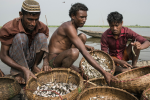
More people than ever before depend on fisheries and aquaculture for food and as a source of income, but harmful practices threaten the sector’s sustainability, says a new FAO report published today. According to the latest edition of “The State of World Fisheries and Aquaculture“, global fisheries and aquaculture production totaled 158 million metric tonnes in 2012, around 10 million tonnes more than in 2010. Aquaculture provided a record 66.6 million metric tonnes of fish. Fish now accounts for almost 17 percent of the global population’s intake of protein - in some coastal and island countries it can top 70 percent. “The health of our planet as well as our own health and future food security all hinge on how we treat the blue world,” FAO Director-General José Graziano da Silva said. Per capita fish consumption has soared from 10 kg in the 1960s to more than 19 kg in 2012. FAO estimates that 10–12 percent of the world’s population depend on fisheries and aquaculture for their livelihoods. Some 90 percent of fishers are small scale and it is estimated that, overall, 15 percent are women.
16.05.2014
UN expert calls on governments to buy local food from family farms
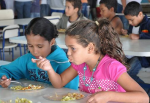
Public food purchasing can contribute to making food systems fairer and more sustainable. This is the key message of Olivier De Schutter’s final publication as the UN Special Rapporteur on the right to food. “Governments have few sources of leverage over increasingly globalized food systems – but public procurement is one of them. When sourcing food for schools, hospitals and public administrations, governments have a rare opportunity to support more nutritious diets and more sustainable food systems in one fell swoop,” he said on Thursday. The public sector is an important buyer of goods. OECD countries spend an average of 12% of their gross domestic products on public purchasing. The public catering sector in the UK, for example, represents some $3 billion per year. De Schutter’s report identified five principles for how governments should use the public purse to contribute to the realisation of the right to food. Public procurement policies should source preferentially from small- scale food farmers and ensure that they receive remunerative prices for their production and that farmworkers benefit from living wages. Moreover, public projects should set specific requirements for adequate food diets, source locally whenever possible, impose sustainability requirements on suppliers and increase participation and accountability in the food system. “It may cost governments slightly more to source from a range of smaller-scale, sustainable operators than from major suppliers, but the investment is worth it,” the UN expert said. The report presents positive examples such as the School Feeding Programme in Brazil, where 30% of the budget transferred to states and municipalities must be used to buy products from family farms. The budget of the programme, now covering more than 49 million children, was increased fourfold between 2003 and 2011.
15.05.2014
Bee biodiversity boosts crop yields
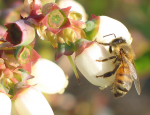
Research from NC State University shows that blueberries produce more seeds and larger berries if they are visited by a more diverse range of bee species, allowing farmers to harvest significantly more pounds of fruit per acre. In the study, which was published in the journal PLOS ONE, the researchers looked at blueberries in North Carolina because it is an economically important crop which relies on insect pollination. “We wanted to understand the functional role of diversity. And we found that there is a quantifiable benefit of having a lot of different types of bees pollinating a crop”, says Dr. Hannah Burrack, an associate professor of entomology at NC State. In the designated blueberry fields, the researchers categorised their bees into five distinct groups: honey bees, bumble bees, southeastern blueberry bees, carpenter bees and a grouping of similar local bees which they termed ‘small native bees’. When a bee from one of these groups visited a flower, it was marked. Some flowers were caged after pollination to prevent multiple bees from visiting the same flower. The team discovered that for each group above one, farmers saw an increase of $311 worth of yield per acre. For example if two bee groups visited a blueberry field, the increase would be $311 per acre. If three bee groups pollinated the field, the increase would be $622 per acre. For North Carolina blueberries as a whole, the researchers calculated the benefit of each bee group to be approximately $1.42 million worth of yield each year. The researchers think the benefit stems from differences in behavior between bee groups, in part depending on the weather. Southeastern blueberry bees also worked in bad weather, while honey bees only did their best during warm, sunny days. “We’ve shown that there is a real financial benefit associated with biodiversity,” Burrack said.
13.05.2014
Indian farmer sets new record in rice production with SRI method

A farmer in the southern Indian state of Tamil Nadu has set a new record in rice production using the system of rice intensification (SRI) method. Mr. Sethumadhavan from Alanganallur produced a bumper harvest of 24 tonnes of paddy per hectare, according to Jaisingh Gnanadurai, joint director of agriculture in Tamil Nadu. SRI originated in Madagascar 30 years ago and is based on four main cropping principles: Transplanting seedlings to the field at a very young stage; reducing plant density to allow the optimal development of each plant; enriching soils with organic matter; and reducing and controlling water application. The method is more labour-intensive but needs fewer seeds and less chemical fertiliser which is why it has received little support from agribusiness. Sethumadhavan, who has been a farmer for 15 years, said he used the common CR 1009 rice seed, a variety which usually does not produce more than six tonnes per hectare. The farmer ploughed the green manure crop Daincha into the soil as organic manure and only topped up the nutrient supply with some inorganic fertilizer. He alternated between wet and dry conditions, did not allow water to stagnate and used only a hand-pushed kono-weeder. “This is a state record. The Tamil Nadu government has advocated a second green revolution by using more organic fertiliser and less inorganic fertilizer,“ Gnanadurai said. Norman Uphoff, professor at Cornell University and a keen promoter of SRI, put the record harvest into perspective by saying that not too much attention should be given to statistical “outliers“. “[It is] averages that feed hungry people and raise farmers out of poverty, not records,“ he told The Guardian.
12.05.2014
Argentine scientist, who warned of glyphosate health hazards, dies

Dr. Andrés Carrasco, an Argentine neuroscientist who confirmed the devastating effects of glyphosate on embryonic development, has died aged 67. Argentina's national science council CONICET announced on Saturday the death of its former president, who had been in declining health. Carrasco, a professor of Molecular Embryology Laboratory at the University of Buenos Aires, was a widely published expert and a thorn in Monsanto's side: His 2010 study provided scientific evidence that glyphosate, the active ingredient in Monsanto’s Roundup, the world’s top-selling herbicide, can cause serious embryonic damage. The study, published in the peer-reviewed journal Chemical Research in Toxicology, found that glyphosate leads to malformations in frog and chicken embryos when applied in doses much lower than what is commonly used in agricultural spraying. It also noted that these malformations were similar to human birth defects observed in GM soy-producing areas exposed to glyphosate.
07.05.2014
New Study Identifies Climate Change Hotspots in Africa
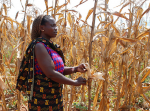
A new study from the Potsdam Institute for Climate Impact Research (PIK) identifies distinct regions of Africa which will be most affected by overlapping impacts of climate change such as drought, floods, declining crop yields or ecosystem damages. The German scientists reported their findings in the journal Global Change Biology. The three regions expected to be climate change hotspots in a couple of decades are parts of Sudan and Ethiopia; the countries surrounding Lake Victoria in central Africa; and the southeast of the continent, especially parts of South Africa, Mozambique and Zimbabwe. They are projected to see more severe dry seasons and reduced plant growth, as well as floodings near Lake Victoria. In these regions, there will be a high likelihood of severe climate change impacts by 2100, affecting countries with high population density and poverty rates. “We tried to identify the places where climate change really hurts most,” lead-author Christoph Müller said in a press statement. The good news is, according to the study, that large countries like Nigeria and the tropical forests of the Congo region will probably be less affected. The researchers said the study focuses on multiple stress points while most research adresses only one aspect of climate change at a time. Farmers and pastoralists need to develop coping strategies to confront likely impacts, such as more intensive droughts in the southern Sahel. The authors believe that based on likelihoods decisions on suitable adaptation measures can be made. These could include insurance systems to balance increased variability in crop yields from one year to another, or water storage systems such as underground cisterns.
